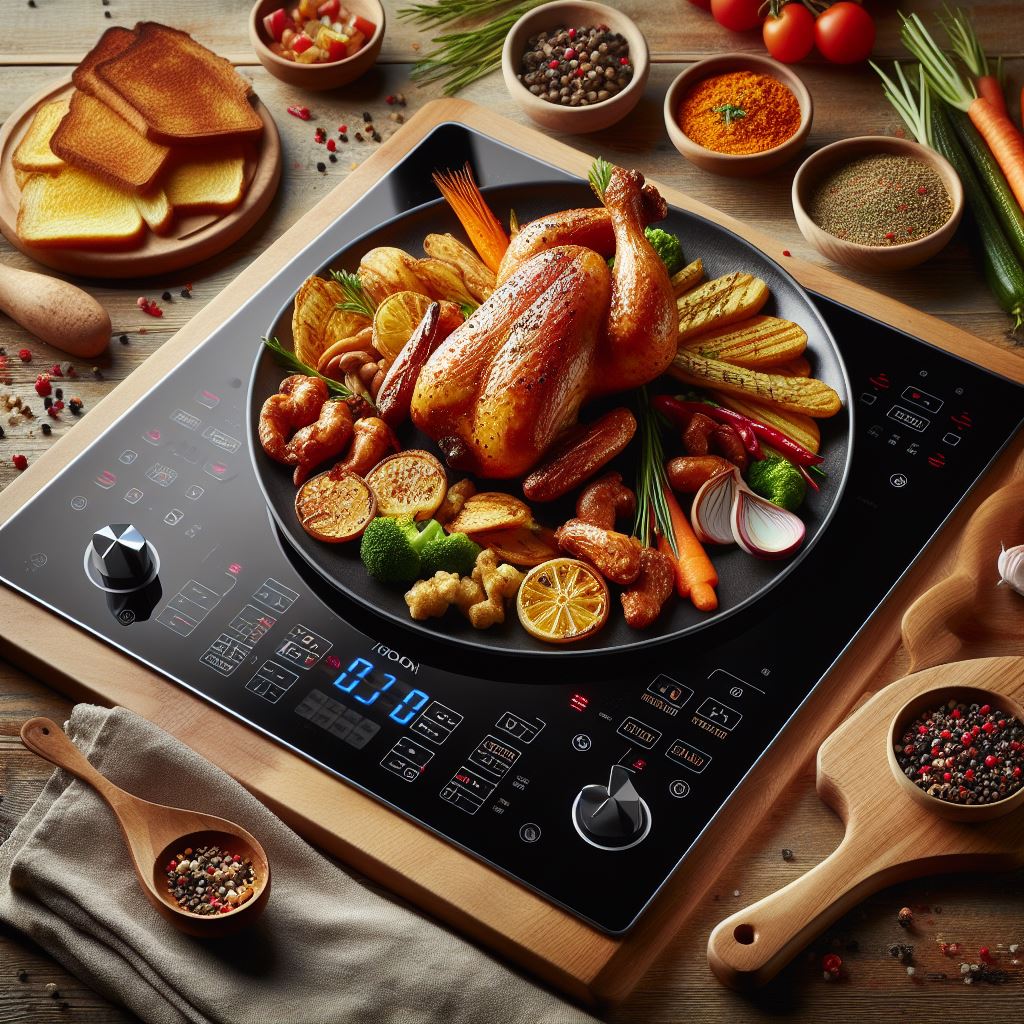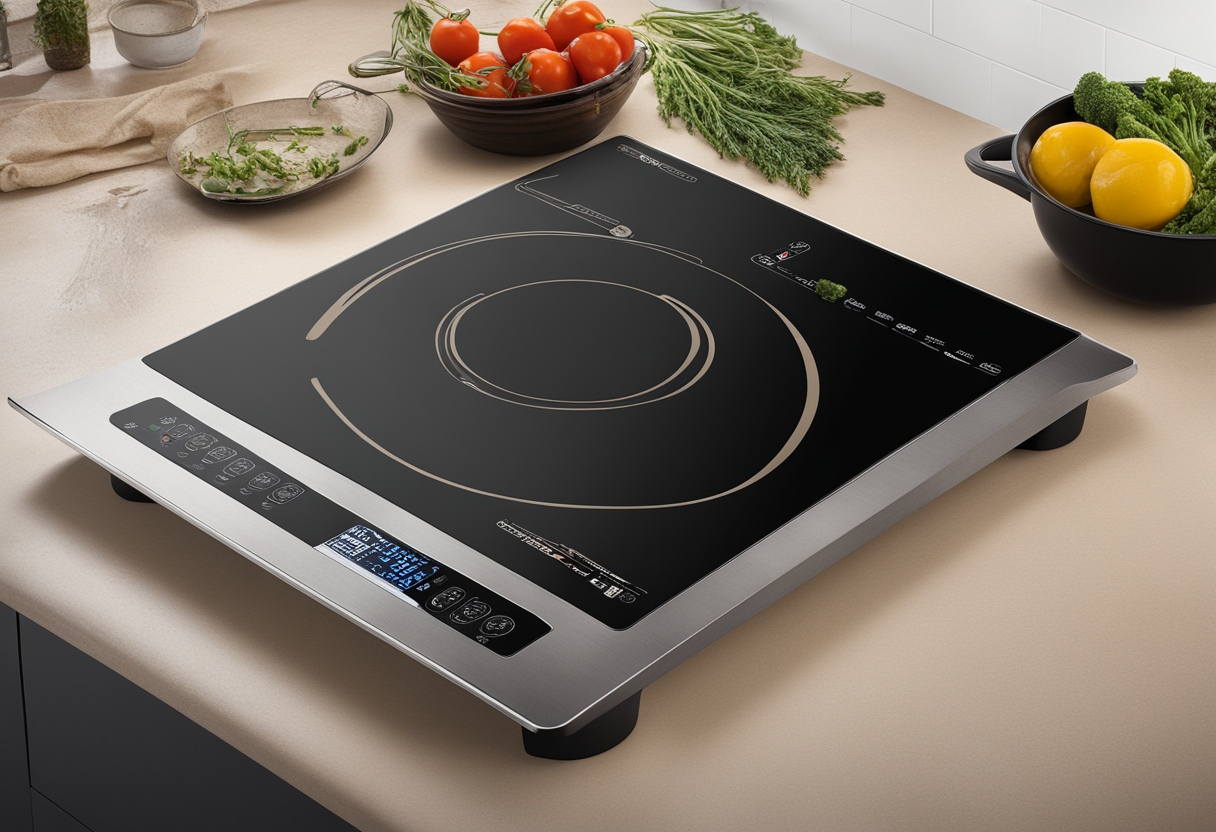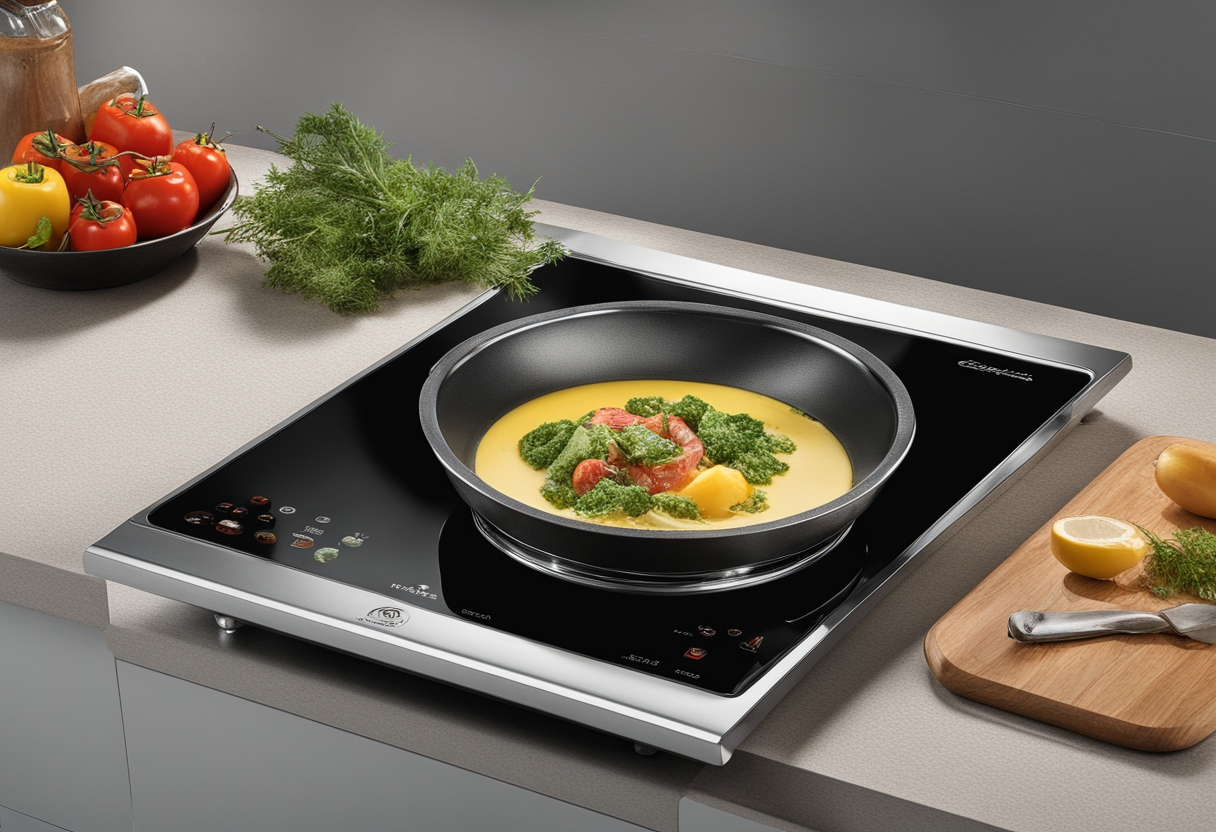The Role of MLCC in Induction Cooktop

Induction cooktops have revolutionized the way we cook, offering a faster, safer, and more energy-efficient alternative to traditional gas or electric cooktops. Unlike conventional cooktops that rely on open flames or heated coils to transfer heat to pots and pans, induction cooktops use electromagnetic induction to heat the cookware directly.
How Induction Cooktops Work
Induction cooktops are equipped with a series of copper coils beneath a ceramic surface. When an electric current passes through these coils, it creates a magnetic field. When you place a compatible pot or pan on the cooktop, the magnetic field induces a current in the cookware, generating heat. This process is highly efficient because it heats the cookware directly, rather than heating the cooktop surface first.
Advantages of Induction Cooktops
One of the key advantages of induction cooktops is their speed and precision. They can heat up much faster than gas or electric cooktops, allowing you to boil water or cook food more quickly. Additionally, induction cooktops offer precise temperature control, making it easier to simmer, sauté, or sear with precision.
Another major advantage of induction cooktops is their safety features. Since the cooktop surface itself doesn’t get hot (only the cookware does), there is a lower risk of burns or accidental fires. This also makes induction cooktops easier to clean, as spills and splatters don’t burn onto the surface.

MLCCs in Induction Cooktops
Multilayer ceramic capacitor (MLCC) plays a crucial role in the operation of induction cooktops. They are used in various components of the cooktop, including the control panel, power supply, and heating elements. MLCCs help regulate the flow of electricity, ensuring that the cooktop operates efficiently and safely.
Importance of MLCCs in Induction Cooktops
Multilayer ceramic capacitors (MLCCs) play a critical role in the operation and performance of induction cooktops. These small but essential components are used in various parts of the cooktop to ensure smooth and efficient operation.
Control Panel
The control panel of an induction cooktop relies on MLCCs to regulate the flow of electricity and ensure that the cooktop responds accurately to user inputs. MLCCs help stabilize the voltage and current levels, preventing fluctuations that could damage the electronics or cause erratic behavior.
Power Supply
MLCCs are also used in the power supply of induction cooktops to filter out noise and interference. They help maintain a stable power supply to the cooktop’s components, ensuring consistent performance and minimizing the risk of damage from power surges.
Heating Elements
The heating elements of an induction cooktop require precise control of power delivery to achieve the desired cooking temperatures. MLCCs help regulate the power flow to the heating elements, ensuring that they operate efficiently and safely.
Reliability and Durability
MLCCs are known for their reliability and durability, making them ideal for use in induction cooktops. They can withstand high temperatures and frequent heating and cooling cycles without degrading, ensuring that the cooktop remains operational for years to come.
MLCC Specifications for Induction Cooktops
Multilayer ceramic capacitors (MLCCs) used in induction cooktops are required to meet specific specifications to ensure they can withstand the high temperatures and frequencies associated with induction cooking. Here are some key specifications to consider:
Temperature Rating
MLCCs used in induction cooktops need to have a high temperature rating to withstand the heat generated during cooking. Common temperature ratings for MLCCs in induction cooktops range from 125°C to 150°C, ensuring they can withstand the heat without degrading.
Capacitance Value
The capacitance value of MLCCs used in induction cooktops depends on their specific application within the cooktop. MLCCs used in the control panel may have different capacitance values than those used in the power supply or heating elements. Typical capacitance values for MLCCs in induction cooktops range from a few nanofarads to several microfarads.
Voltage Rating
MLCCs used in induction cooktops need to have a high enough voltage rating to handle the voltage levels present in the cooktop’s circuitry. Typical voltage ratings for MLCCs in induction cooktops range from 50V to 100V, although higher voltage ratings may be required for certain applications.
Size and Package
The size and package of MLCCs used in induction cooktops depend on the specific space constraints and design requirements of the cooktop. MLCCs are available in a variety of package sizes, including 0402, 0603, and 0805, with smaller sizes often preferred for space-constrained applications.
Dielectric Material
The dielectric material used in MLCCs for induction cooktops is typically a ceramic material such as barium titanate or strontium titanate. These materials provide high capacitance values in a small package size and are capable of withstanding high temperatures and frequencies.

MLCCs and Energy Efficiency in Induction Cooktops
Multilayer ceramic capacitors (MLCCs) play a crucial role in improving the energy efficiency of induction cooktops. These small but essential components help regulate the flow of electricity, ensuring that induction cooktops operate at their optimal efficiency levels.
Power Factor Correction
One way MLCCs contribute to energy efficiency in induction cooktops is through power factor correction (PFC). MLCCs used in PFC circuits help align the current and voltage waveforms, reducing energy losses and improving the overall efficiency of the cooktop.
Voltage Regulation
MLCCs are also used to regulate the voltage in induction cooktops, ensuring that the cooktop receives a stable voltage supply. This helps prevent energy waste and ensures that the cooktop operates efficiently, even under varying load conditions.
Reduced Standby Power Consumption
MLCCs are used in the control and power supply circuits of induction cooktops to reduce standby power consumption. By efficiently managing power delivery to different components of the cooktop, MLCCs help minimize energy waste when the cooktop is not in use.
Improved Switching Efficiency
MLCCs used in the switching circuits of induction cooktops help improve switching efficiency, reducing energy losses during the switching process. This leads to overall energy savings and improved performance of the cooktop.
Enhanced Heat Management
MLCCs also contribute to energy efficiency by helping manage heat buildup in induction cooktops. By ensuring that components operate within their temperature limits, MLCCs help prevent energy waste and ensure the long-term reliability of the cooktop.
Comparison with Other Capacitors for Induction Cooktops
Induction cooktops rely on capacitors to perform various functions, such as voltage regulation, filtering, and power factor correction. While multilayer ceramic capacitors (MLCCs) are commonly used in induction cooktops, other types of capacitors are also suitable for these applications. Here, we compare MLCCs with other capacitors commonly used in induction cooktops:
MLCCs vs. Electrolytic Capacitors
MLCCs are preferred over electrolytic capacitors in induction cooktops due to their higher reliability, longer lifespan, and better performance at high frequencies. Electrolytic capacitors are more prone to failure, especially in high-temperature environments, making them less suitable for induction cooktop applications.
MLCCs vs. Film Capacitors
Film capacitors offer higher voltage ratings and better high-frequency performance than MLCCs, making them suitable for certain applications in induction cooktops where high voltage and high-frequency operation are required. However, film capacitors are larger in size and more expensive than MLCCs, making them less practical for compact and cost-effective designs.
MLCCs vs. Tantalum Capacitors
Tantalum capacitors offer high capacitance values in a small package, similar to MLCCs. However, tantalum capacitors are more expensive and less stable at high temperatures compared to MLCCs, making them less suitable for induction cooktop applications where reliability and temperature stability are critical.
MLCCs vs. Supercapacitors
Supercapacitors offer high capacitance values and fast charging and discharging capabilities, making them suitable for applications requiring high power density, such as inductive cooktops. However, supercapacitors are larger, more expensive, and have higher self-discharge rates compared to MLCCs, making them less practical for most induction cooktop applications.
In conclusion, MLCCs are indispensable components in the world of induction cooktops, and their continued innovation and advancement will likely lead to even more efficient, reliable, and feature-rich cooktops in the future.
